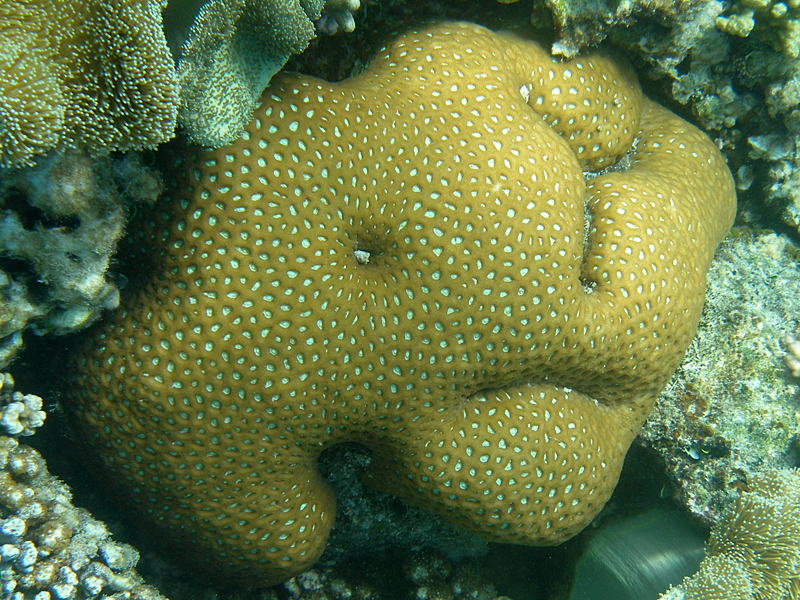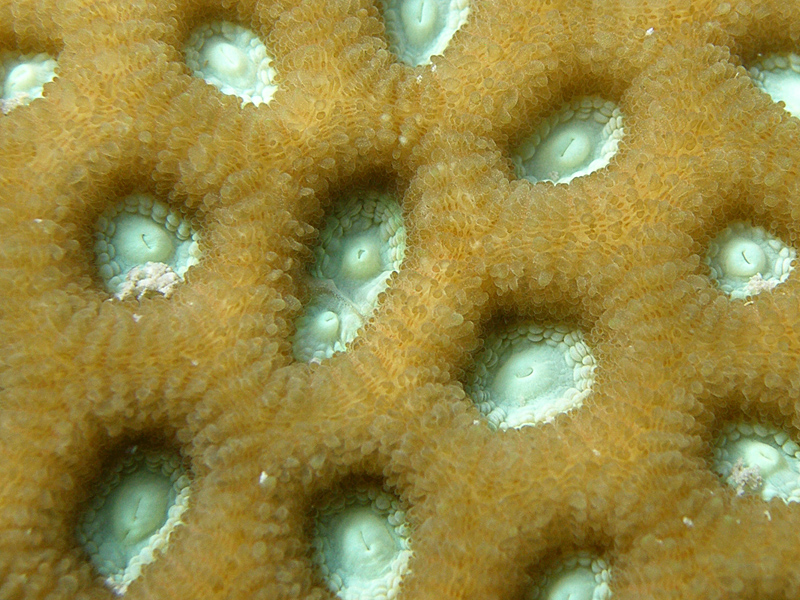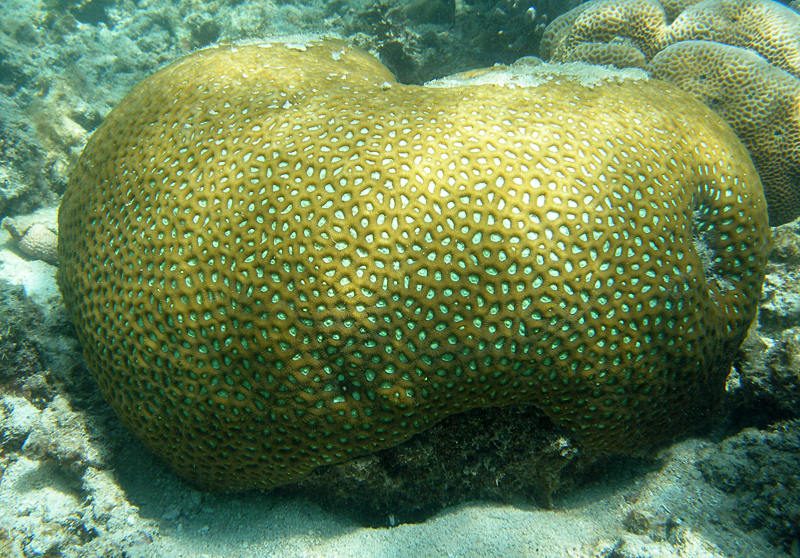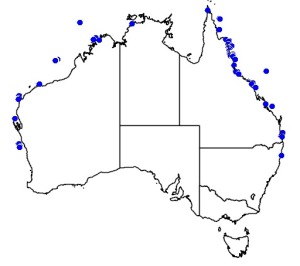Colours
Distinguishing features
A species that forms massive colonies up to 1.7m diameter. Corallites are angular, cereoid and large, usually with green oral disks, while colony colour is usually pale brown to dark brown. Distinguish from the closely related F. abdita which has more angular corallites with more prominant paliform lobes.
Size
- Size data has not been obtained.
Synonyms
Distribution
Distribution and habitat preferences
Reef fronts, shallow reef flats.
Can be found in most habitats around Lizard Island.
Behaviour
F. halicora is a hermaphroditic broadcast spawner. Larvae are released without symbiotic zooxanthellae, but acquire these from seawater at about the 6th day after spawning. Higher than normal water temperatures did not affect fertilisation and embryogenesis in laboratory experiments, and after bleaching, this species was found to repopuate the tissues with similar clades of zooxanthellae.
This species is slow growing like most massive Favid corals, with growth rates typically less than 0.5cm/year.
Web resources
References
- Babcock, R.C., G.D. Bull, P.L. Harrison, A.J. Heyward, J.K. Oliver, C.C. Wallace and B.L. Willis (1986). Synchronous spawnings of 105 scleractinian coral species on the Great Barrier Reef, Marine Biology, 90: 379-394. LIRS catalog number 300.
- Baird, A.H., J.R. Guest and B.L. Willis (2009). Systematic and biogeographical patterns in the reproductive biology of scleractinian corals, Annual Review of Ecology, Evolution and Systematics, 40: 551-571.
- Baird, A.H. and P.A. Marshall (2000). Bleaching of corals on the Great Barrier Reef: differential susceptibilities among taxa, Coral Reefs, 19: 155-163.
- View all references





